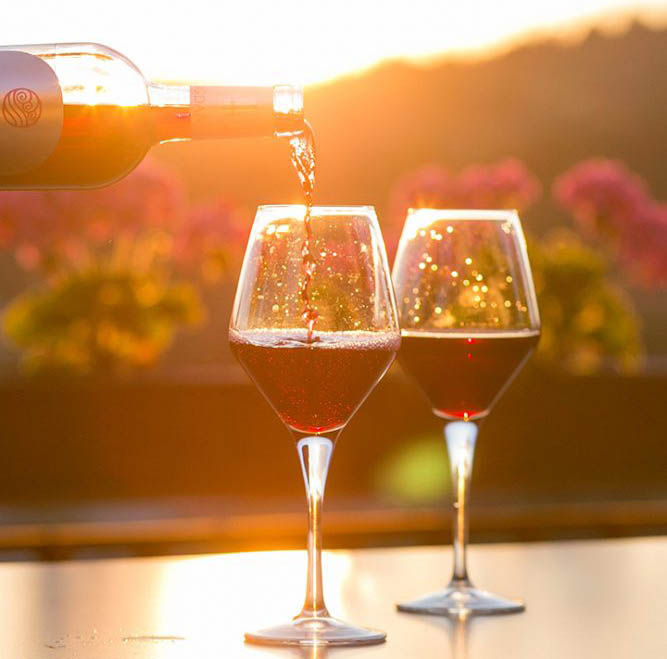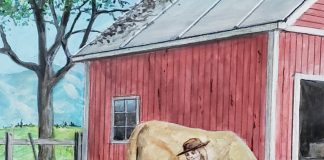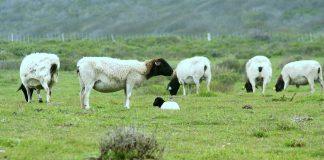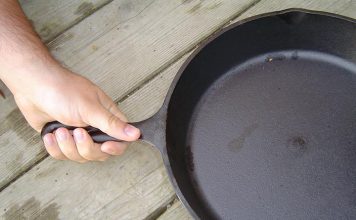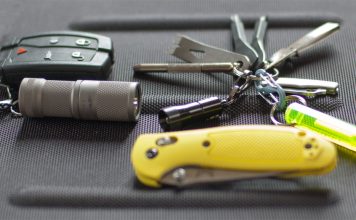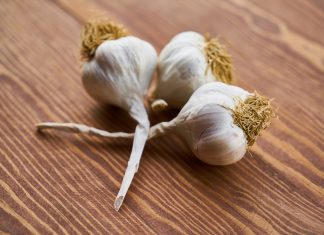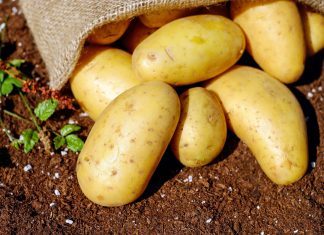| By Linda Gabris |  |
| Issue #88 • July/August, 2004 |
From spring’s first delicate blossoms to the last clinging berries of autumn, hobby winemakers can cash in on nature’s bounty to rack up an exciting array of distinctive wines that’ll do justice to any cellar.
I have been winemaking for years and not only have I bottled up some blue ribbon winners, but have accumulated a treasured stash of well-aged wines that compliment any meal. Nothing makes a better toast to good health than a glass of sparkling gooseberry wine or celebrates a special occasion like a bottle of prized blueberry—fondly known by its ribbon as Berry Blue.
Contrary to what some folks believe, making wine is not difficult to master. Nor is it an expensive hobby to get started in. Truth is, if one enjoys being outdoors, foraging goods for the wine barrel will open up a whole new world of recreational fun. And once you’ve rounded up the equipment needed, you’ll be delightfully surprised at what fine wines you can enjoy at so little expense.
Equipment needed
With home winemakers growing in numbers across the country it is easy to locate hobby brewing shops that carry everything you’ll need. There are huge barrels for those who purchase large amounts of commercial fruits for winemaking, but for the beginner looking at making wine from wilderness offerings that are gathered in far less quantity, the fermenting vat can be a smaller container such as a five-gallon crock or any food grade plastic bucket or tub. It’s a good idea to have two or three small vats so several batches of wine can be fermenting at the same time. You’ll need a large kettle. I use an open canning kettle which holds about five gallons. Add to your list some tube for siphoning, cheesecloth, wine bottles, and corks.
Further down the road, as expertise grows, you might want to buy a fermentation jar with lock water-seal, fruit press, and corker. You’ll also hear mention of strange supplements like campden tablets (stabilizer made out of sulfite powder), sterilizing powders, pectic enzymes, and other additives that can instill fear in the heart of a beginner winemaker. So I have chosen simple, old-fashioned recipes to share, ones that do not call for unfamiliar items. Historically, wines have been successfully made without the addition of chemicals, and can still be made today in the way of our forefathers. However, if you’re interested in more modern techniques, talk to experts where the items are sold.
Getting started
The number one rule to top quality wine is cleanliness. All pickings must be gathered away from roadsides and other areas where they may be contaminated with herbicides and pesticides. Once home with your wilderness harvest, wash well under cold running water to remove insects, dust, and other undesirables.
Keep your equipment clean. Sterilize bottles by boiling in water for five minutes before bottling. Boil and cool water before adding to fermentation vat. The hardest part of all is allowing wine proper time to age. The biggest fault of beginner winemakers is serving their creations far too soon. It’s hard to resist temptation but I assure you, when it comes to wine, time is worth the wait.
Yeast is used to prompt fermenting or working. The recipes below call for one packet (eight grams) or ¼ ounce of dry yeast. For each recipe you will need one piece of toast. To add the yeast: Place the toast on the juice in fermentation crock and sprinkle it with yeast. Even though all recipes below can be halved, doubled, or tripled, the amount of yeast will remain the same.
A bit about sugar. You can always increase sugar amounts in any recipe to produce sweeter wines. However, unless recommended, do not decrease sugar or you might end up with vinegar.
When a recipe calls for straining juice, use clean cheesecloth and be sure to twist and wring it well in order to get out all the pulp and juice before discarding skins, seeds, and pits.
Juice ferments best at room temperature. Always cover the crock with clean cloth while fermenting is taking place. After the wine is done working (bubbling has ceased), finish it off by siphoning into bottles, corking, and labeling. When siphoning, leave sediments in vat and discard. Store wine on its side in a cool, dark place.
Dandelion wine:
4 quarts dandelion flowers
1 gallon water
½ pound chopped golden raisins (raisins can be added to any wine for extra body. Use golden raisins for white wines and dark raisins or currants for reds.)
2 oranges
l lemon
4 pounds sugar
yeast preparation
Gather dandelion flowers on a dry day when they are fully open. Remove the stalks but leave the green sepals on. Wash the flowers and put them in a large bowl. Cover with ½ gallon of boiling water. Cover with a cloth and let the flowers steep 24 hours or overnight. Pour into a kettle with raisins, grated rind, and the pulp and juice of the oranges and lemon. Bring to a boil, add the sugar, stirring until dissolved. Simmer for 30 minutes. Let cool and pour into a crock. Add ½ gallon of water, then add the yeast. Cover and let ferment for two to three weeks or until the wine stops working. Finish off by siphoning into bottles, corking, and labeling.
Billy’s Blackberry wine:
Wild blackberries make superb, full-bodied distinctive wine. We pick blackberries for wine from the hedges that surround our friend, Billy’s, farm. Thus our blackberry bears his name. If you can’t harvest from the wild, commercial blackberries are well worth the investment for this robust wine.

1 gallon blackberries
1 gallon water
sugar (as needed—see the instructions below)
yeast preparation
Put the berries in a bowl and cover with boiling water. Let stand 24 hours or overnight. Put in kettle, bring to boil. Simmer 10 minutes. Strain. Measure the juice. Add one cup sugar to two parts juice for dessert wine, or one part sugar to three parts juice for less sweet wine. Empty into the crock, add the yeast, and ferment for two to three weeks. Finish off. Try to resist temptation for at least nine months. This is a very fine wine.
Variation: Substitute raspberries for a lighter, red wine that has a rich fruity flavor. A mix of blackberry and raspberry can be used for a unique cellar treat.
Berry Blue wine:
I love picking blueberries and since they are so plentiful, it’s easy to keep the cellar well-stocked with this full-bodied wine.
2 gallons blueberries
2 gallons water
2 oranges, rinds grated, pulp and juice reserved
6 pounds sugar
yeast preparation
Mash the berries and set aside. Bring one gallon water to a boil. Add the sugar and prepared oranges and boil five minutes. Pour over the berries. Let stand 24 hours or overnight. Mash again. Pour into a crock. Add one gallon of water and yeast. Ferment for two to three weeks, stirring occasionally, until the wine stops working. Strain. Put back into the crock and let it settle for three days. Finish off.
Pin Cherry wine:
Pin cherries are tiny but bursting with flavor. The trick to getting enough for the crock is beating birds to trees when fruit is ripe. If you can’t harvest enough for a batch of wine, make up the difference with tame cherries. Or substitute chokecherries, which are often more plentiful, for a deeper wine. And keep in mind that you can mix and match to create unique wines.
1 gallon pin cherries (or chokecherries)
2 cups chopped maraschino cherries, with juice (only if using pin cherries)
1 gallon water
5 pounds sugar
yeast preparation
Put the cherries in a kettle with one quart of water. Bring to a boil. Reduce the heat and simmer, mashing until pulpy. Remove from heat and let stand 24 hours or overnight. Strain. Put the juice in the kettle and add three quarts of water and the sugar. Bring to boil and simmer for 20 minutes. Cool. Pour into a crock and add the yeast. Ferment for two to three weeks. Finish off.
Old World Gooseberry wine:
This medium-dry wine was used as an Old World curative for all kinds of common complaints. Today it’s drunk for sheer pleasure. If you can’t get enough gooseberries for a batch, make up the difference with wild currants, which usually grow in the same woodlands. Or tame garden gooseberries can be used. A quart of wild or tame frozen strawberries or raspberries adds pink color and flair to this delightful wine.
4 quarts gooseberries
1 pound golden raisins
1-½ gallons water
4 pounds sugar
1 quart liquid honey
yeast preparation
Bring one gallon of water to a boil and drop in the gooseberries and raisins. Simmer an hour. Let stand 24 hours or overnight. Empty the mixture back into the kettle. Bring to a boil. Add the sugar and honey, boil five minutes. Cool. Strain juice into crock and add yeast. Ferment for two to three weeks. Finish off. Wait at least eight months—or longer if you can—before decanting. This one improves greatly with age.
Be bear aware
When foraging in the woodlands be…bear aware. Don’t let your guard down when it comes to bears. They, too, are especially fond of berries. When you go down in the woods, don’t go alone. Go in numbers. Make noise. Wear bells. Sing and be merry. If you’ve got a hunch there’s a bear in the air, there probably is. When in doubt, leave. Slowly. Calmly. Never have a picnic in the patch or carry food in your pocket. If confronted by a startled bear, back away slowly. Don’t run—bears can do over 30 miles an hour when the race is on. When a bear is spotted in the patch, do not close it in. Make your exit as unthreatening as possible. Avoid blocking or crossing its path.


